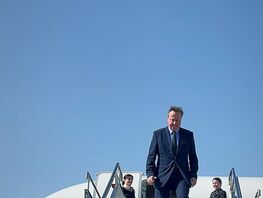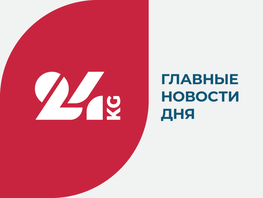The National Statistical Committee of Kyrgyzstan today presented preliminary results of the country’s economic development in 2017. Forecasts of specialists came true. According to the results of the year, economy of the country has grown.
The same GDP
According to the results of the year, Kyrgyzstan’s GDP totaled 493.3 billion soms and grew by 4.5 percent compared to 2016 and by 3.8 percent — compared to a more stable 2015.
«In 2017, the growth of the economy of the republic was provided at the expense of commodity production (by 7.5 percent) and services (by 2.1 percent),» the National Statistical Committee reported.
Excluding companies developing Kumtor, the growth data is almost identical. GDP amounted to 445.4 billion soms with an increase of 4.5 percent compared to 2016 and 3.7 percent — compared to 2015.
Such figures are quite understandable. By the end of 2016, GDP growth not only acquired a positive trend, but also showed good growth. But the increase in indicators in comparison with 2015 indicates that the economy of the republic has practically recovered from the shocks of the regional crisis and difficulties in connection with Kyrgyzstan’s accession to the Eurasian Economic Union (EEU).
We produce oil and gas
Industrial production growth rates inspire even more optimism. At the end of the year, the volume of output is estimated at 231.2 billion soms. This is 11.5 percent more than in 2016. Excluding enterprises developing Kumtor, the figure amounted to 130 billion soms. Compared to 2016, at least 21 percent growth was registered.
The picture is darkened only by the fact that the increase in production volume is associated mainly with the mining of minerals. In addition, good data were recorded only in the production of food products, including beverages and tobacco products.
At the same time, there was a lag in the production of electronic and optical equipment (by 65.5 percent), electric equipment (by 12.3 percent), wood, paper products and printing production (by 0.4 percent).
Prices slowly but go up
According to the National Statistical Committee, prices in December rose insignificantly — by only 0.7 percent. Food and non-alcoholic beverages went up most of all — by 1.5 percent. Prices for fresh vegetables (14.4 percent), potatoes (9 percent), milk (5.2 percent) and eggs (3.6 percent) grew up especially intense.
In December, some products became cheaper. This is sugar (by 1.4 percent), cereals (by 2.5 percent), fish (by 1 percent), lamb (by 0.9 percent), vegetable oil (by 0.2 percent) and bread (by 0.2 percent).
In general, prices for tobacco products, services and alcoholic beverages rose in the republic. But the prices of non-food products fell. A drop in prices for solid fuel, liquefied gas and pharmaceutical products mainly caused this.
Most of all, prices rose in Osh region, and least — in Batken region.
Despite the fact that in December inflation rate in the republic was small, the annual price growth rate reached 3.7 percent. As a result, in 2016, the country experienced a deflation of 0.5 percent.
The maximum increase in prices (11.1 percent) in January-December was recorded in Osh region, the smallest (2.3 percent) — in Bishkek.
Sale of dried fruits and glass
For 11 months, entrepreneurs in Kyrgyzstan earned $ 5.6 billion. This is 10.9 percent more than in 2016.
The foreign trade turnover with the countries of the Eurasian Economic Union is estimated at $ 2.2 billion. The indicator grew by 14.3 percent compared to 2016. However it did not reach the level of 2015, when the country only entered into the union. There is a fall of 11.7 percent.
Traditionally, the import supplies dominate in the structure of trade. The country imported goods worth $ 4 billion for January-November. Compared with 2016, the volume of imports increased by 10.2 percent.
Kyrgyzstan started importing more synthetic (5.5 times) and artificial (3.1 times) fabrics, ceramic products (1.8 times), tires (1.5 times).
The volume of export supplies for 11 months amounted to $1.5 billion (an increase of 12.8 percent compared to the same period of 2016). This is due to an increase in the export of polished glass (1.9 times), butter (1.5 times), dried fruits (by 44.7%), precious metal ores and concentrates (by 12.9%), as well as nonmonetary gold (by 2.8 percent).
At the same time, there was a decrease in the export of dried leguminous vegetables (by 31.8 percent) and electric incandescent lamps (by 29 percent).
The volume of mutual trade with EEU countries in January-November amounted to $ 2,179.2 billion. Compared to January-November 2016, the indicator grew by 14.3 percent. At the same time, exports of goods increased by 25.7%, imports — by 11.2%.
Russia (59.4 percent) and Kazakhstan (36.6 percent) account for the largest share of the republic’s mutual trade with EEU countries.
Kyrgyzstan exports mainly clothes, fresh vegetables and dried fruits to Russia, and to Kazakhstan — clothes, glass, ore and concentrates of precious metals. Poultry meat, tires and food products prevail in the imports from Russia and Kazakhstan.





